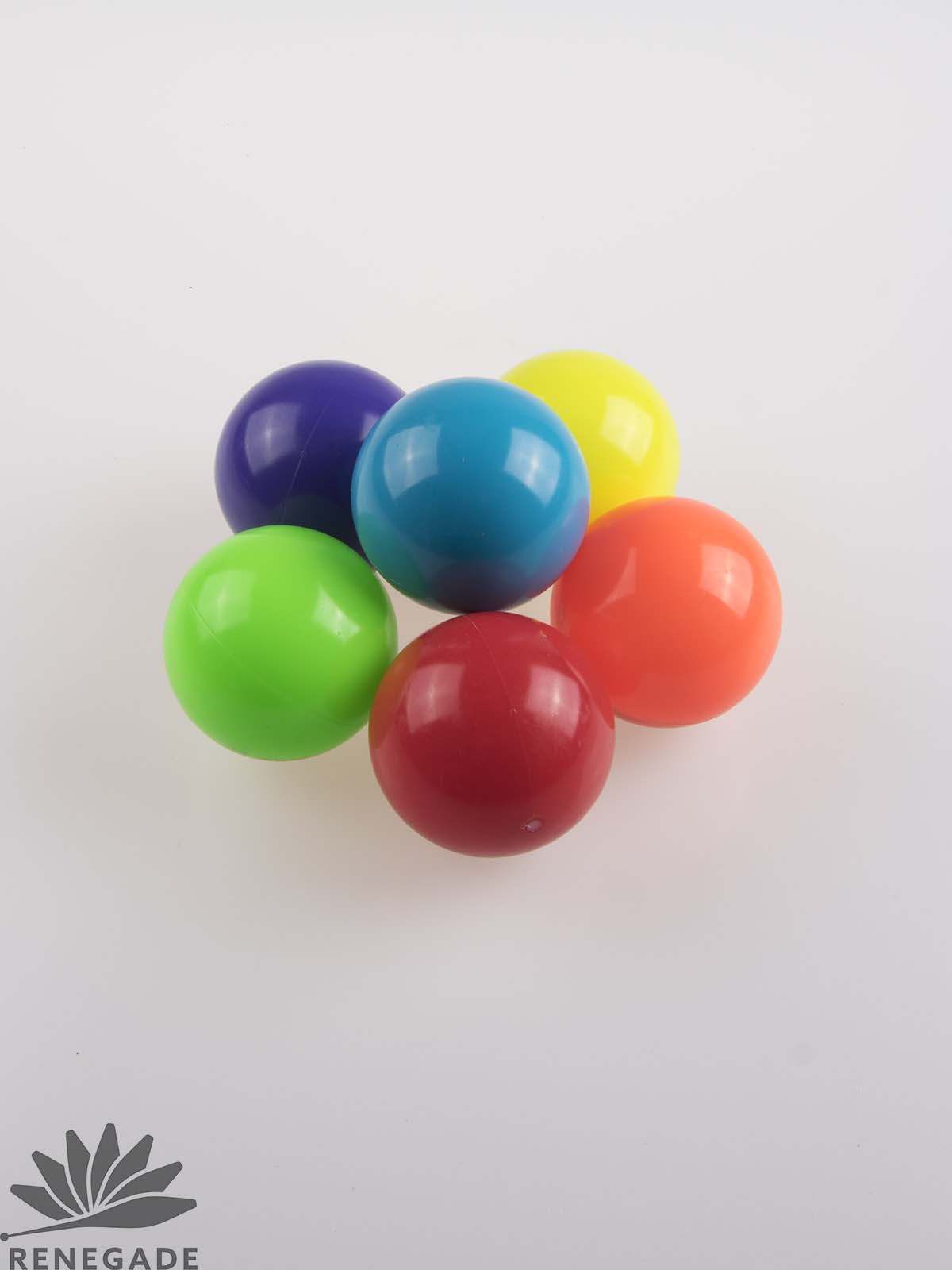
In juggling, the term Russian ball refers to juggling balls that are partially filled in contrast to normal juggling balls that are fully filled or solid. The principle behind a Russian ball is that the filling goes to the bottom of the ball, making the center of gravity of the ball lower so it is easier to balance and catch.


History of Russian Juggling Balls
This type of ball is a very old idea. Jugglers in the 1800s and 1900s used partially filled balls for balancing. Many old jugging acts finished their show with a balancing pose, and many of these balls were partially filled to make the trick easier. Jugglers of that time most likely also used partially filled balls for toss juggling. In those days, jugglers were very secretive and never shared props or technical information with their peers. It is often disputed/wondered if Enrico Rastelli used Russian balls. From video footage, it appears that this is not the case, as you cannot see any ball wobble (a telltale sign of a Russian ball) when thrown in the air.
Russian Juggling Ball Fillings
There are many versions and kinds of Russian balls made. Below are the principles that affect how a Russian ball works/behaves. The Russian effect pertains to how much the filling affects the balance and flight (wobble) of the ball.
- a thin light ball shell with a high density filling has the most Russian effect
- a thick heavy ball shell with a low density filling has the smaller Russian effect.
- liquid silicone for filling, produces the lowest Russian effect, as the liquid moves much slower to the bottom of the ball than a solid filling.
- if the filling material has low friction it will increase the speed the material fall to bottom of the ball, increasing the Russian effect. Micro Glass beads has less friction than sand, or salt. So it produces more effect.
- Higher-density fillings will produce a lower center of gravity of the ball, so it is easier to balance. Chromite sand is the most dense material and has the lowest center of gravity
- The higher the density of filling, the more the ball will wobble when thrown, unless thrown with a very flat, no-spin toss.
Russian Juggling Ball Shells
When choosing a Russian ball, another important factor to consider is the ball’s surface. If the surface of the ball is sticky, it will not release from hand smoothly because it is sticking to an adjacent ball. However, if the surface is slippery, it will have no grip and be harder to juggle.
- PVC balls have the most grip, but are sticky on the release ( Play SRX, Sil-x and Sil-x Hybrid)
- TPU ball are less grippy but still have a slight stickiness on the release, but has a bouncy feel (Henrys HIX)
- EVA ball has has a slight grip and smooth release. ( Radfactor EVA Russian)
- HDPE ball has the least grip and are slippery. With no friction on the release. (pool balls and wiffle balls, Norwik and others)
There are also several ball, that use a blended blow molded material. For example the Play Juggling Plug&Play or the Radfactor Premium Russian Balls. These both are between EVA and HDPE, and have good characteristics.
Which size Russian Juggling Ball is Best
Refer to our Choosing a Juggling Ball Size article to determine what is the best size ball to fit your hands and how many balls you are juggling.
Popular Russian Juggling Balls for Sale on Renegade
Russian Juggling Ball Plugs

- Renegade Russsain X-Large Glass, non-removable plug
- Play Sil-x implosion, removable plug ( sil-x 100 mm size non-removable)
- Renegade Russian Glass, removable plug
- Play Plug&Play removable silicone plug
- Radfactor hot glue, non-removal plug
- Play SRX removable plug
- Henrys HIX welded plug non-removable
Large Sized Russian Juggling Balls
Large-sized Russian balls are made for single ball manipulation or for stacking balance tricks. Usually a Russian ball over 100mm is too large for toss juggling. Renegade is the only company that make oversized Russian balls. They are made with a thick vinyl shell and filled with micro glass beads. They can be custom ordered depending on what you want to use them for.

Weights of Russian Juggling Balls
There is a wide range of weights offered for Russian balls, but the trend is usually light weight of around 95-120 grams each, with most weighing approx. 100 grams. This is because many Russian balls are intended for numbers juggling( five balls or more). They need to be light for the start when you have more than 3 balls in one hand. However, 100 grams is pretty light for 3-5 balls. I think the optimal weight for 3-5 ball juggling is more like 125-150 grams, although this is a matter of preference. .
Do Russian Juggling Balls work or are they a gimmick?
Are Russian balls easier to juggle? They are definitely easier to balance or to catch for a stall, such as when performing a catch using your foot or neck. However, for toss juggling, it is hard to say whether they make much of a difference. When juggling 7 balls, the Russian ball can be easier to catch for it seems to fall farther into your hand. For flashing 7 balls, it seems a beanbag ball might be better. In the case of 3-5 balls, there is not much difference between Russian and other kinds of juggling balls. In my opinion, there are far more important factors to consider than the effects of partially versus fully filled balls on your level of juggling. Having proper technique, adhering to practice regimens, and using balls that have the right size and matched weight are much more critical factors. That being said, there are several advantages a Russian ball has over some other types: they do not roll when dropped, the cost of a Russian ball is generally lower, and they are very durable.


Share:
How To Select a Juggling Ball Size
How to Select a Diabolo